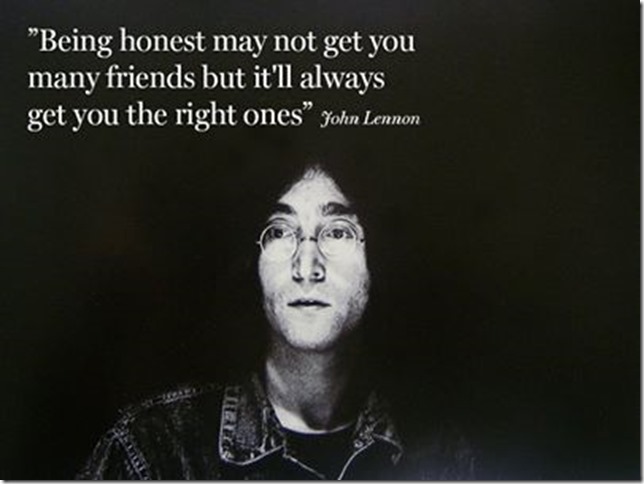Written by Belle Beth Cooper
 Ever since my dad tried to convince me to meditate when I was about 12, I’ve been fairly skeptical of this practice. It always seemed to be so vague and hard to understand that I just decided it wasn’t for me.
Ever since my dad tried to convince me to meditate when I was about 12, I’ve been fairly skeptical of this practice. It always seemed to be so vague and hard to understand that I just decided it wasn’t for me.
More recently, I’ve actually found how simple (not easy, but simple) meditation can be and what huge benefit it can have for my day to day happiness. As an adult, I first started my meditation practice with just two minute per day. Two minutes! I got that idea from Leo Babauta’s Zen Habits blog, where he points out how starting with a tiny habit is the first step to consistently achieving it. So even thought two minutes won’t make much difference, that’s where I started.
Whether you’re as skeptical as I used to be, or you’re well ahead of me with a meditation habit of several hours, I think it’s always interesting to find out how new habits affect our brains. I had a look into meditation to see what’s going on inside our brains when we do this, and what I found is pretty interesting.
What is meditation?
There are different ways to meditate, and since it’s such a personal practice there are probably more than any of us know about. There are a couple that are usually focused on heavily in scientific research, though. These are focused-attention, or mindful meditation, which is where you focus on one specific thing—it could be your breathing, a sensation in your body or a particular object outside of you. The point of this type of meditation is to focus strongly on one point and continually bring your attention back to that focal point when it wanders.
The other type of meditation that’s often used in research is open-monitoring meditation. This is where you pay attention to all of the things happening around you—you simply notice everything without reacting.
What happens in your brain when you meditate
This is where things get really interesting. Using modern technology like fMRI scans, scientists have developed a more thorough understanding of what’s taking place in our brains when we meditate, kind of similar to how scientists have previously looked at measuring creativity in our brains.
The overall difference is that our brains stop processing information as actively as they normally would. We start to show a decrease in beta waves, which indicate that our brains are processing information, even after a single 20-minute meditation session if we’ve never tried it before.
In the image below you can see how the beta waves (shown in bright colors on the left) are dramatically reduced during meditation (on the right).

Below is the best explanation I found of what happens in each part of the brain during meditation:
Frontal lobe
This is the most highly evolved part of the brain, responsible for reasoning, planning, emotions and self-conscious awareness. During meditation, the frontal cortex tends to go offline.
Parietal lobe
This part of the brain processes sensory information about the surrounding world, orienting you in time and space. During meditation, activity in the parietal lobe slows down.
Thalamus
The gatekeeper for the senses, this organ focuses your attention by funneling some sensory data deeper into the brain and stopping other signals in their tracks. Meditation reduces the flow of incoming information to a trickle.
Reticular formation
As the brain’s sentry, this structure receives incoming stimuli and puts the brain on alert, ready to respond. Meditating dials back the arousal signal.
How meditation affects us
Now that we know what’s going on inside our brains, let’s take a look at the research into the ways it affects our health. It’s in fact very similar to how exercising affects our brains.
Better focus
Because meditation is a practice in focusing our attention and being aware of when it drifts, this actually improves our focus when we’re not meditating, as well. It’s a lasting effect that comes from regular bouts of meditation.
Focused attention is very much like a muscle, one that needs to be strengthened through exercise.
Less anxiety
This point is pretty technical, but it’s really interesting. The more we meditate, the less anxiety we have, and it turns out this is because we’re actually loosening the connections of particular neural pathways. This sounds bad, but it’s not.
What happens without meditation is that there’s a section of our brains that’s sometimes called the Me Center (it’s technically the medial prefrontal cortex). This is the part that processes information relating to ourselves and our experiences. Normally the neural pathways from the bodily sensation and fear centers of the brain to the Me Center are really strong. When you experience a scary or upsetting sensation, it triggers a strong reaction in your Me Center, making you feel scared and under attack.
When we meditate, we weaken this neural connection. This means that we don’t react as strongly to sensations that might have once lit up our Me Centers. As we weaken this connection, we simultaneously strengthen the connection between what’s known as our Assessment Center (the part of our brains known for reasoning) and our bodily sensation and fear centers. So when we experience scary or upsetting sensations, we can more easily look at them rationally. Here’s a good example:
For example, when you experience pain, rather than becoming anxious and assuming it means something is wrong with you, you can watch the pain rise and fall without becoming ensnared in a story about what it might mean.
More creativity
As a writer, this is one thing I’m always interested in and we’ve explored the science of creativity in depth before. Unfortunately, it’s not the most easy thing to study, but there is some research into how meditation can affect our creativity. Researchers at Leiden University in the Netherlands studied both focused-attention and open-monitoring mediation to see if there was any improvement in creativity afterwards. They found that people who practiced focused-attention meditation did not show any obvious signs of improvement in the creativity task following their meditation. For those who did open-monitoring meditation, however, they performed better on a task that asked them to come up with new ideas.
More compassion
Research on meditation has shown that empathy and compassion are higher in those who practice meditation regularly. One experiment showed participants images of other people that were either good, bad or neutral in what they called “compassion meditation.” The participants were able to focus their attention and reduce their emotional reactions to these images, even when they weren’t in a meditative state. They also experienced more compassion for others when shown disturbing images.
Part of this comes from activity in the amygdala—the part of the brain that processes emotional stimuli. During meditation, this part of the brain normally shows decreased activity, but in this experiment it was exceptionally responsive when participants were shown images of people.
Another study in 2008 found that people who meditated regularly had stronger activation levels in their temporal parietal junctures (a part of the brain tied to empathy) when they heard the sounds of people suffering, than those who didn’t meditate.
Better memory
One of the things meditation has been linked to is improving rapid memory recall. Catherine Kerr, a researcher at the Martinos Center for Biomedical Imaging and the Osher Research Center found that people who practiced mindful meditation were able to adjust the brain wave that screens out distractions and increase their productivity more quickly that those that did not meditate. She said that this ability to ignore distractions could explain “their superior ability to rapidly remember and incorporate new facts.” This seems to be very similar to the power of being exposed to new situations that will also dramatically improve our memory of things.
Less stress
Mindful meditation has been shown to help people perform under pressure while feeling less stressed. A 2012 study split a group of human resources managers into three, which one third participating in mindful meditation training, another third taking body relaxation training and the last third given no training at all. A stressful multitasking test was given to all the managers before and after the eight-week experiment. In the final test, the group that had participated in the meditation training reported less stress during the test than both of the other groups.
More gray matter
Meditation has been linked to larger amounts of gray matter in the hippocampus and frontal areas of the brain. I didn’t know what this meant at first, but it turns out it’s pretty great. More gray matter can lead to more positive emotions, longer-lasting emotional stability and heightened focus during daily life.
Meditation has also been shown to diminish age-related effects on gray matter and reduce the decline of our cognitive functioning.

Getting started with Meditation
Here’s a great infographic that gives an overview of the different kinds of meditation and some tips for fitting in meditation at work.

Source: http://blog.bufferapp.com/how-meditation-affects-your-brain















